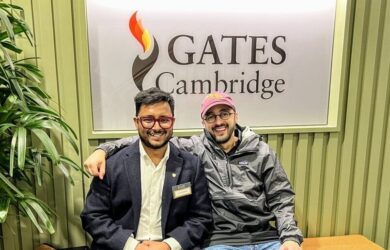
Phillip Geheb writes about trends in sustainable building in the US in the latest edition of The Gates Scholar.
Over the last decade, real-estate industry professionals in the US have become increasingly aware that construction and operation practices for buildings need to be re-imagined to reduce the impact of the built environment on the natural world.
Thorough scientific research around the world has confirmed that climate change is occurring and greenhouse gases emitted by human activities are the primary driver. Buildings account for approximately 70% of the electricity consumed in the US, and they could be made up to 50% more energy-efficient with currently available technologies.
This represents not only a challenge, but also a significant opportunity for the US real-estate industry to be a part of the solution to a global problem.
The concept of a ‘sustainable’ or ‘green’ building is not new, but has taken several decades to emerge as an industry norm. A sustainable building incorporates improvements related to energy efficiency, renewable energy and storm water management as well as design principles associated with location siting, material sourcing and green operational practices.
A green building’s design encourages users to adopt habits aimed at reducing its environmental impact. While many buildings are partially designed with green principles like day-lighting, which orients the building to increase sun exposure, several rating systems have been developed to benchmark the performance of a sustainable building as a whole.
Rating systems such as the Leadership in Energy and Environmental Design (LEED), Energy Star and Green Globes have been critical to the growth of the sustainable building movement in the US.
Advantages
Building green has several advantages. First, sustainable buildings save property owners money through lower utility and maintenance costs and, in the case of on-site renewable energy installations, can even generate additional sources of revenue. Second, green buildings create healthier working environments for building users, thereby decreasing absenteeism and increasing productivity. Third, more building end-users, particularly Fortune 1000 companies, are adopting company-wide sustainability policies that have increased the demand for work space in sustainable buildings.
Thanks to these benefits, green buildings are beginning to enjoy higher market values than similarly situated non-green buildings.
The sustainable building movement has, however, historically faced a significant hurdle: the perceived premium of going green. The common perception is that green design adds approximately 2% in construction costs and $150,000 in additional soft costs related to applying for and receiving a green building certification.
What’s more, for existing buildings, in a typical triple-net lease, where the tenant pays for a building’s energy usage plus a portion of its common-area usage, landlords have little incentive to make improvements that save energy usage costs for the tenant but generate little return on investment to the landlord.
These concerns illustrate short-term thinking for a long-term problem. Perceptions in the US real-estate industry have dramatically changed. As a result of public education programmes, successful green investments and building policies adopted by federal, state and local governments, sustainable building practices are becoming the industry norm rather
than the exception.
The following are some notable examples:
The US federal government, one of the country’s largest property owners, has been an early leader of the sustainable building movement, and President Obama has launched the ‘Better Buildings Initiative’ to effect a 20% reduction in energy usage of federal buildings by 2020.
Major US cities such as San Francisco, Seattle and Washington, DC, have adopted energy benchmarking programmes that require property owners to track and publicly report building energy and water usage annually, thus creating an accountability system that encourages green investments.
The City of New York has promoted the ‘energy-aligned lease clause,’ which allows both the tenant and landlord to share the costs and benefits of energy retrofits. Since its introduction in April 2011, the clause has become a model for tackling the split-incentive problem for triple-net leases.
Since the City of Dallas, Texas, adopted one of the nation’s first green building ordinances in 2008, over 95 LEED-certified buildings have been constructed, with dozens more slated for completion within the next five years. Sustainable building makes environmental and economic sense. The built environment does need not be at odds with the natural world.
From new buildings with vegetative roofs and on-site photovoltaic systems to high efficiency heating, ventilation and air conditioning system upgrades to existing buildings, the real-estate industry is learning how to save costs, benchmark progress and incentivise others to contribute to a more sustainable planet – one building at a time.
*Phillip Geheb [2005] did an MPhil in Modern Society and Global Transitions. He is a real-estate attorney in Dallas, Texas, representing commercial real-estate developers and investors in creating sustainable urban developments throughout the US. This article is published in the current edition of The Gates Scholar magazine. Picture of California Academy of Science care of Wikicommons.












